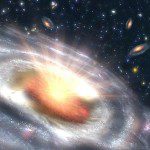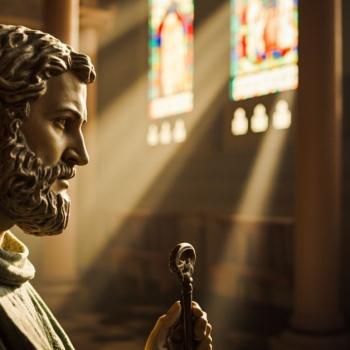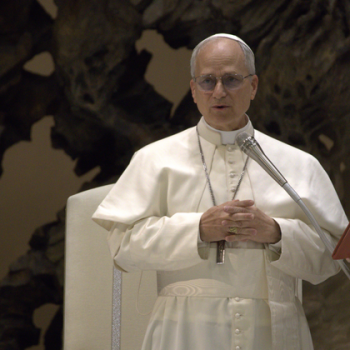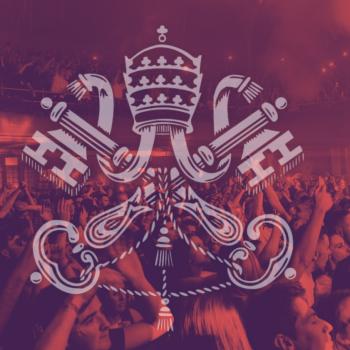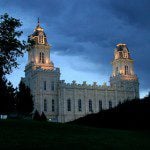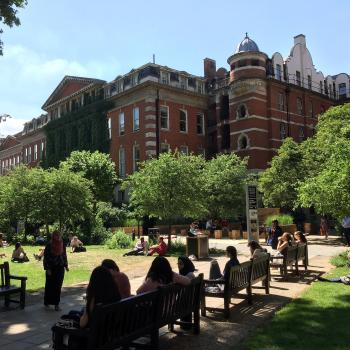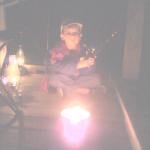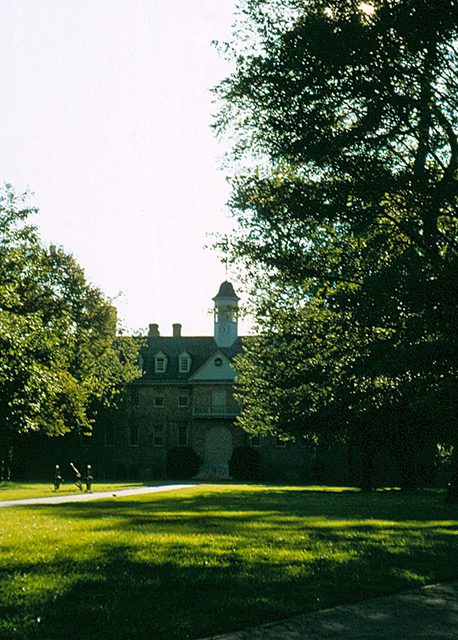
(Wikimedia Commons public domain image)
While we were in Virginia recently, we not only took the time to visit some Civil War battlefields but to take family members to Jamestown — the first permanent English settlement in the Americas, famously associated with Pocahontas — out by Williamsburg, and, in the other direction, to Carter Mountain, near Charlottesville. In preparation for the Jamestown visit, some of us watched the 1995 Disney film Pocahontas. (Age appropriate, and all that.). And, of course, at Carter Mountain we picked apples, bought fresh apple pie, drank hot apple cider, and enjoyed the magnificent view of the surrounding countryside on a very clear and beautiful day.
The other high point during our stay in Williamsburg was that my former student Nathan B. Oman, who is currently Rita Anne Rollins Professor of Law at William & Mary Law School, dropped by the place where we were lodging. He and I had a very good conversation that evening. He is, in my judgment, one of the most interesting thinkers in the Church, even when, as does occasionally happen, we don’t quite see things in exactly the same way.
The College of William & Mary has a remarkable heritage.
It was founded in 1693 under a royal charter issued by King William III and Queen Mary II — hence its name — which makes it the second-oldest institution of higher education in the United States (after Harvard College, which was established in 1636) and the ninth-oldest in the English-speaking world altogether. Among its many distinguished alumni are Presidents Thomas Jefferson, James Monroe, John Tyler, and, in a sense, George Washington, as well as Chief Justice John Marshall, Senators Henry Clay and Thomas Hart Benton, Jon Stewart, the actress Glenn Close, General Winfield Scott, and the author (one of my favorites) James Branch Cabell.
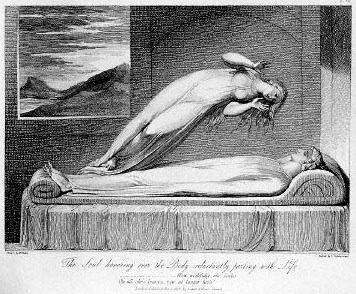
Luigi Schiavonetti (d. 1810)
Wikimedia Commons public domain image
It’s been a while since I’ve posted anything here about near-death experiences, which are a significant interest of mine. However, I recently read through the latest issue of the principal academic journal in the field. So I will now share a little bit from “Comparing Near-Death Experiences and Shared Death Experiences: An Illuminating Contrast,” Journal of Near-Death Studies 40/21 (Summer 2022), 77-94. (Obviously, the journal is a bit behind its publication schedule. Sadly, not uncommon with many academic periodicals.) Authorship of the article is attributed to the “Shared Crossing Research Initiative (SCRI),” a team of researchers based in Santa Barbara, California, but the principal authors appear to have been Michael Kinsella and William Peters. They note that “To date, researchers have published only one qualitative study of SDEs” — and that one, published in 2021, was done by SCRI itself.
What are “shared death experiences”?
Individuals may sense — physically and/or intuitively — that a loved one is dying; witness various unusual phenomena associated with death — such as seeing what is believed to be the dying person’s spirit leaving their body; find themselves either out of body or in a visionary realm where they seem to be accompanying the dying to some destination; and/or feel that they are somehow actively assisting the dying to transition. (79)
The authors note that near-death experiences are often “dismissed” — unpersuasively, they say (and I agree) — “as perceptual hallucinations occurring by natural mechanisms or due to various neurobiological or psychological factors” linked to the dying process or, even, to the perception (whether accurate or not) of impending death
But SDE’s are more difficult to explain in that they happen to individuals who are not themselves physically or psychologically close to dying. (79)
The authors point out that their previous study had noted strong similarities between NDEs and SDEs. Among those similarities is that both seemed very real, indeed hyper-real (78).
“It was like being in a vision, but very real and vivid, unmistakably real.” (Cynthia Ploski regarding her NDE, cited on page 80; italics in the original)
“[T]his experience where I was there seemed realer than this real.” (Magrethe K of her SDE, pages 80-81, 82)
Another important commonality is this one:
NDErs sometimes return with information not yet known in the physical world but subsequently verified as accurate. We observed this same feature in SDEs. (81)
One of the recurring features of near-death experiences is a strange and ultimately indescribable light, often golden, that seems not only brilliant but somehow loving and inviting and sometimes even personal. That same feature seems to occur in SDEs, too. The authors share part of an experience that Angela H. claims to have had while approaching the deathbed of her mother in law:
I noticed that the room was a welcoming gold color and unusual. It looked warm and it looked as though you wanted to be in there. . . . I started to think, “Oh, it looks an absolutely beautiful gold color!” And as I got to the room, it felt like the whole room was in some kind of a bubble. (83)
Scott T’s girlfriend died as the result of a tragic car accident. A few days later, that girlfriend’s son also died from injuries sustained in the accident, while Scott T sat by the boy’s bedside:
So, I’m in the room, and I have stepped into another dimension. “Stepped” isn’t the right word, but I have entered into another dimension that is simultaneous with the one that I am in. And so that’s how come I can say I was in the space with [his girlfriend] and [his girlfriend’s son] and got to witness their reunion and got to go with them into the light, and into the light meant opening to the light that is in us all. And so that’s the only language that I can use to describe it. This is why the very first thing, when you read about the common components of near-death experiences, the very first one is ineffable. It is really hard to describe what it’s like to be in the physical and at the same time to be someplace else that is this extraordinary place of divine love. (85)
(to be continued)

(Wikimedia Commons public domain image)
Finally, I nod briefly in the direction of the Christopher Hitchens Memorial “How Religion Poisons Everything” File™:
A brief article from the unfailingly worthwhile Stephen Cranney: “Perspective: Religion isn’t sexually repressive. Just read the data. Those who insist that religion is a buzzkill have not read the literature” And if you’re tempted to doubt that those who insist that religion is a buzzkill haven’t read the literature, just take a look at the unwittingly amusing comments that follow the article. Empirical data plainly has little or no effect on such folks.



